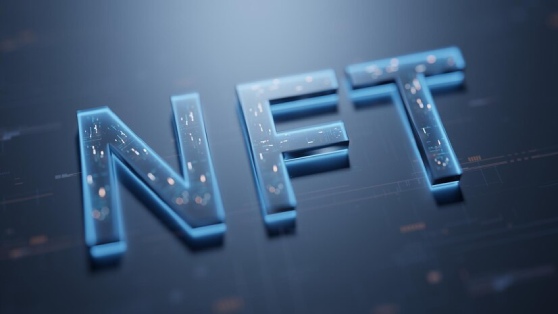-
NFTs have become a red-hot asset type in the crypto industry, with users trading billions of dollars in value monthly. A common misconception is that they are only for buying, selling, or holding. Indeed, they can become more complex and innovative financial arrangements.
However, as we can sell cryptocurrency instantly, that is not the same with NFTs. The emerging NFT development market is highly illiquid. Sometimes it takes months until someone purchases your NFT.
And when you sell an NFT, you sell the whole thing. Most NFT owners do not want to sell the entire NFT, in many cases, not even part of it. These challenges manifest the emergence of the latest concept called NFT lending. It can solve the issues related to illiquidity associated with NFTs. At the same time, it can encourage people to invest more in the market by decreasing the entry cost.
What is NFT Lending?
NFT lending requires putting up NFTs as collateral to seek a loan. NFTfi.com is one such lending platform.
Generally, investors or lenders wanting to generate higher returns on their investments than traditional or standard crypto-based loans offer NFT loans.
Unlike crypto lending, NFT lending requires borrowers to put up their NFTs as collateral to obtain a loan.
NFT lending is hardly available in CeFI (centralized finance). For instance, Nexo is a platform that acts as a traditional lender. It is solely responsible for defining and managing the terms of lending and borrowing.
However, in DeFi (decentralized finance), NFT loan platforms leverage smart contract development to govern the terms and charges. We expect NFT lending to evolve rapidly with more people and money becoming involved and regulation frameworks taking place.
How NFT Lending Works
NFT lending platforms allow NFT investors to obtain crypto and define the terms and rates of lending without involving intermediaries.
A borrower can get a loan of up to 50% of the valuation of their NFT.
NFT lending protocols can prove to be transformative for the fintech industry. They are fast, more straightforward, transparent, and quick than traditional lending platforms.
They do not require users to deal with intermediaries for creditworthiness checks, identity verification, and waiting period for the rejection or approval of their application.
These deFi apps utilize smart contracts that enable users to gain complete control over their assets.
Fundamentally, an automated smart contract locks in the pledged collateral.
Further, a lender chooses a fair value of collateral by determining its past transactions and floor prices of similar collaterals.
After a lender and a borrower agree on the terms and conditions defined in the smart contract, the borrower locks the NFT in an escrow system. It results in the forfeiture of the NFT if the borrower is not able to repay the loan amount within a specified period.
Fixed-period, fixed-rate loans are offered through lending platforms like NFTfi.com and Arcade. They do not have access to the funds or the collateral, and they do not sell the collateral when its value drops.
However, if the loan-to-value ratio reaches 33% or more, other protocols, like JPEGd, will liquidate the collateral.
You may also like to read | Types of NFTs (Non-Fungible Tokens) You Didn't Know
NFT Lending Types
P2P Lending
Because transactions take place directly between the participants, borrowing in the NFT realm resembles traditional crypto loans in several aspects.
For instance, a borrower who has been offered a loan posts an NFT on NFTfi.com as security. Wrapped DAI or Ether (WETH) will be sent to the borrower, and under specific terms, the collateral is kept in a digital vault.
Peer to Protocol Lending
Similar to DeFi lending protocols, native commodities are leased directly from lenders in this case using peer-to-protocol NFT loans. On peer-to-peer networks, liquid providers (LPs) are required to put tokens into pools. The borrowers can acquire liquidity by storing their NFTs in vaults.
Non-fungible Debt Holdings
To provide loans for cryptocurrencies, businesses have adopted collateralized debt scenario lending. To qualify for DAI loans, borrowers must lock up ETH as security. Likewise, to qualify for synthetic stablecoin loans, debtors with non-fungible debt holdings must lock their NFT assets.
Also, Visit | NFT Loyalty Program: The Ultimate Guide for Enterprises
NFT Lending Benefits
Compared to conventional loans that involve tangible collateral like real estate or equities, NFT loans provide several advantages. The following is a list of some of the primary benefits of NFT loans.
Liquidity Availability
Owners of NFTs can obtain money through NFT Loans without having to sell their assets. Particularly in markets with significant volatility, this is advantageous. NFTs can be used as collateral by borrowers to secure loans that cannot be secured through conventional methods, such as bank loans.
Other Investment Possibilities
NFT loans provide a brand-new asset-backed investment option that is not possible with conventional collateral. By investing in NFT loans, lenders can diversify their holdings, and NFTs can provide a level of security and transparency that is not possible with traditional types of collateral.
No Need for Tangible Security
Due to the lack of physical collateral requirements, NFT loans are a more practical choice for borrowers. The cost of safeguarding and holding significant physical collateral is not a concern for borrowers.
Increased Processing Speed
Compared to typical loans, NFT loans can be processed more quickly. NFTs are digital assets, making them faster to transmit and verify than physical assets.
Global Reach
NFT loans are available to both lenders and borrowers worldwide because they are not geographically limited. As a result, more lenders and borrowers are accessible.
You might also like | Intelligent NFT Development: Shaping the Future of NFTs
Conclusion
NFT lending offers a lot of thrilling possibilities for how people invest and make money with their NFTs. As a result, it may completely alter the playing field for both NFT owners and traders. While lenders can access new investment options, NFT owners can generate revenue without selling their holdings. As the NFT industry grows, NFT lending models may develop or mature to offer a better loaning experience.
For more information about NFT lending or lending platform development, connect with our NFT developers.

Our Offices
INDIA
Emaar Digital Greens, Sector 61,
Gurugram, Haryana
122011.
Welldone Tech Park,
Sector 48, Sohna road,
Gurugram, Haryana
122018.















